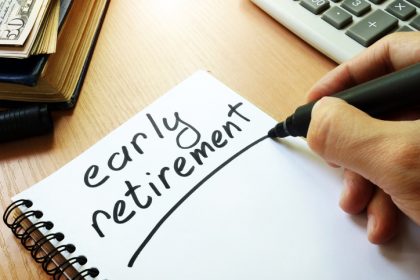Rolling over your 401(k) to a 403(b) is only an option if you start a job that offers a 403(b) plan. These plans are typically available through public schools, nonprofits and certain government organizations. If you do become eligible, transferring your retirement savings from a 401(k) to a 403(b) can help consolidate your funds and maintain tax-deferred growth. Both account types offer similar tax advantages. But it’s important to understand the differences, plan rules and any potential tax consequences before starting the rollover process.
Ask a financial advisor how to structure your 401(k) to best benefit your retirement years.
Benefits of Rolling Your 401(k) Into a 403(b)
Understanding the benefits of rolling your 401(k) into a 403(b) can be crucial for maximizing your financial future during retirement.
While 401(k) plans are typically offered by private-sector employers, 403(b) plans are designed for employees of public schools and certain nonprofit organizations.
If you are transitioning from a private sector job to a role in education or a nonprofit, rolling over your 401(k) into a 403(b) can offer several advantages.
One of the primary benefits of rolling your 401(k) into a 403(b) is the simplification of account management. By consolidating your retirement savings into a single account, you reduce the complexity of managing multiple accounts. This makes it much easier to track your investments and assess your overall financial health. With this streamlined approach, you can avoid missing important deadlines or required minimum distributions, which can have tax implications.
Another advantage of rolling over your 401(k) into a 403(b) is the potential cost savings. 403(b) plans often have lower administrative fees compared to 401(k) plans. This is especially true if you are moving to a large nonprofit or educational institution with significant bargaining power. Lower fees mean more of your money stays invested, which can lead to greater growth over time. Additionally, some 403(b) plans offer access to low-cost investment options, further enhancing your potential savings.
Tax rules depend on whether your account is traditional or Roth. If you roll over a traditional 401(k) to a traditional 403(b), you won’t owe taxes right away because both accounts grow tax-deferred. And, if you have a Roth 401(k), you can roll it into a Roth 403(b) without triggering taxes, since both use after-tax money. But rolling a Roth 401(k) into a traditional 403(b) would create a tax bill. Keep the account types the same to avoid unexpected taxes.
4 Steps to Rolling Over a 401(k) to a 403(b) Account
Rolling over a 401(k) to a 403(b) account can be a strategic move for those looking to consolidate their retirement savings. It takes just a few steps.
1. Evaluate Your Current 401(k) Plan

If you have left your job, your former employer’s Before initiating a rollover, it is important to review the details of your existing 401(k) plan cannot block you from rolling over your funds. However, if you are still working there, some plans may limit your ability to move money. Additionally, you should check whether your plan charges any fees for processing rollovers or if there are penalties for early withdrawals. Reviewing these details will help you understand the timing and cost of the move.
2. Initiate the Rollover Process
Contact the financial institution managing your 401(k) to initiate the rollover. It will provide you with the necessary forms and instructions.
Be sure to specify that you want a direct rollover where the funds transfer directly from your 401(k) to your 403(b). This helps avoid any immediate tax liabilities or penalties that could arise from taking a distribution.
3. Coordinate With Your 403(b) Provider
After initiating the rollover with your 401(k) provider, reach out to the institution managing your 403(b) account. Inform them of the incoming funds to ensure they are ready to receive the transfer. They may require additional documentation or forms to complete the process.
Keeping both parties informed and coordinating the transfer can help prevent any delays or complications.
4. Monitor the Transfer and Confirm Completion
Once the rollover is underway, it is essential to monitor the process closely. Confirm the transfer with both your 401(k) and 403(b) providers. This step helps ensure your retirement savings are not inadvertently left in limbo. After the transfer is complete, review your 403(b) account to verify the funds have been allocated according to your investment preferences.
If you need personalized advice, a financial advisor can provide valuable insights tailored to your specific situation.
Other 401(k) Rollover Options
When considering a 401(k) rollover, explore all available options to ensure you are making the best financial decision for your future. While rolling over a 401(k) to a 403(b) is one possibility, other alternatives might better suit your needs.
- Rolling over to an IRA: Transferring your 401(k) to an Individual Retirement Account (IRA) can offer greater investment flexibility. Unlike employer-sponsored plans, IRAs typically provide a wider range of investment types, including stocks, bonds and mutual funds. Additionally, IRAs often come with lower fees, helping to maximize your retirement savings over time.
- Leaving the 401(k) with your former employer: If your former employer allows it, you might choose to leave your 401(k) as is. This option can be beneficial if you are satisfied with the plan’s investment choices and fee structure. However, it is crucial to stay informed about any changes to the plan and maintain access to your account.
- Rolling over to a new employer’s 401(k): If your new employer offers a 401(k) plan, you might consider rolling over your old 401(k) into the new one. This can simplify your retirement savings by consolidating accounts, making it easier to manage your investments. Additionally, some employer plans offer unique benefits, such as matching contributions, which can enhance your savings potential.
Exploring these 401(k) rollover options can help you determine the best path for your retirement savings. Each option has its own set of advantages and considerations to evaluate based on your financial goals and circumstances. By understanding these alternatives, you can make a well-informed decision that aligns with your long-term retirement strategy.
Bottom Line

Rolling over a 401(k) to a 403(b) may make sense if you move from a corporate job to one in education or a nonprofit. These plans follow similar tax rules, so the transfer can be direct. Taking the right steps helps you keep your savings on track and avoid taxes or penalties. Make sure you verify the rollover policies and requirements of both your 401(k) and 403(b) plans before starting your transfer.
Retirement Planning Tips
- A financial advisor can help you evaluate your retirement plan to determine whether you have enough saved and recommend strategies to grow your nest egg so that it can last a lifetime. Finding a financial advisor doesn’t have to be hard. SmartAsset’s free tool matches you with vetted financial advisors who serve your area, and you can have a free introductory call with your advisor matches to decide which one you feel is right for you. If you’re ready to find an advisor who can help you achieve your financial goals, get started now.
- Mandatory distributions from a tax-deferred retirement account can complicate your post-retirement tax planning. Use SmartAsset’s RMD calculator to estimate your required minimum distributions.
Photo credit: ©iStock.com/skynesher, ©iStock.com/Pekic, ©iStock.com/Milan Markovic
Read the full article here
















